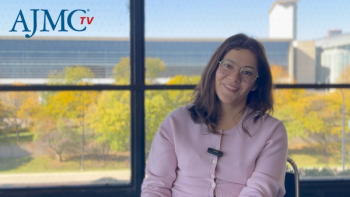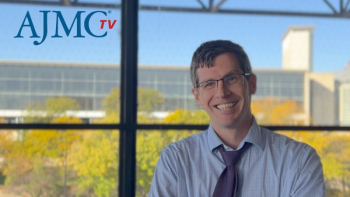
Accurately Diagnosing COPD
An overview of current challenges in achieving an early, accurate diagnosis of chronic obstructive pulmonary disease and considerations surrounding referral to pulmonologists.
Transcript
Neil B. Minkoff, MD: Let me jump ahead, and then I’m going to come back to a question I have on spirometry. One is this disconnect that you’re mentioning. One of the things we struggle with at different parts of our careers, whether on the provider side or the payer side, has been this early-versus-late diagnosis and when the PCP [primary care physician] should be pushing the patient to someone with more COPD [chronic obstructive pulmonary disease] experience. I’d like to get your sense on a couple of things. When should you or your colleagues be consulted? And why are PCPs not accurately diagnosing? Why are they resistant to doing spirometry? Not to load up the whole boat here, but I feel like those all kind of go together as 1.
Frank C. Sciurba, MD, FCCP: As pulmonologists, we often feel that our touch matters in almost every case. Let’s start with the easy question. In folks who have persistent symptoms and are headed in a more severe direction, especially when some of the more advanced therapies are indicated, I think at that point a pulmonologist has to at least weigh in. When the usual therapy that a primary care doctor is used to seeing affect the patient is not working, then maybe something unusual is going on that a specialist may have seen more often, and we may have to get them involved.
But I would argue, even at an earlier stage of COPD, for a specialist to weigh in just once. Because often, patients who are diagnosed with many other things are first diagnosed with COPD because it’s so common. Patients present with cough and sputum production, so interpreting the complexities of pulmonary function testing and imaging sometimes can lead us in other directions. A specialist should weigh in once if somebody has a recognized pulmonary disease. As far as long-term management, I think it’s the more resistant, more severe patient. Primary care doctors are more than capable, in most cases, of managing these patients.
Neil B. Minkoff, MD: Maria, from your point of view in trying to manage the system—and referral is a part of that, and medication management is part of that—do you have any limitations on access to pulmonologists? Is it based on certain clinical criteria, or is it more open than that?
Maria Lopes, MD, MS: It’s more open. I think that certainly there are limitations in your geographic area. Who is it that you can see? In rural areas, how much access to a pulmonologist or a pulmonary clinic is there? Those are some regional limitations, particularly in rural areas. I think what would be interesting is, especially now with telehealth, to have that ability to check in remotely with a pulmonologist who can weigh in on setting the stage, if you will, in terms of diagnosis, treatment approach, and maybe be part of an annual evaluation that hopefully raises all tides, including what the PCP can do and is able to do and is considering, because you’re absolutely right.
In a world where you have a patient who may have 4 or 5 other comorbid conditions and you’re focused on HEDIS [Healthcare Effectiveness Data and Information Set], Medicare Star [Rating System] measures, A1C [glycated hemoglobin] control, blood pressure, and often the checkoff box with smoking cessation, and there’s not enough time to address all the symptoms, the disease itself becomes important to have a multidisciplinary approach weigh in.
Byron Thomashow, MD: I want to follow up on that thought if it’s OK, Neil. I agree with what both of you guys have said, but it’s complicated because most of the people who are sent to pulmonologists tend to be frequent exacerbators. They’re sick that often. They’re calling their doctors a lot of times. With that constant need for attention, they’re often referred. We see far less of the people who are not the frequent exacerbators but who are gradually deteriorating. You could certainly make an argument that it would be nice to see some of those patients a little earlier on, before they reach the point that they can’t go from here to the wall without getting short of breath. Maybe there might be some things we could add. We don’t see a lot of those.
Neil B. Minkoff, MD: The way your practices are set up, you might not know the answer to this question, but do you feel that a fair number of patients are self-referring? Or they’re waiting for their PCP to say you need more help?
Frank C. Sciurba, MD, FCCP: With advanced disease, yes. But with up to even moderate or early severe disease, rarely.
Maria Lopes, MD, MS: I think our resources are almost the opposite of what they should be. The opportunity is perhaps to manage this early on, and we do have disease-management programs, usually led by nurses and case managers. But as you get sicker and as you become a higher cost burden, that’s where the tendency is to be able to then focus on that individual. Perhaps there are opportunities early on to be able to control the disease and do a better job?
Byron Thomashow, MD: I don’t want to suggest that COPD is a disease that can’t be managed in primary care. Most of it lives in primary care, and I don’t think Frank is suggesting that we take over the management of all these people. I just think that it potentially provides a little bit of additional guidance when necessary, and it would be nice not to see them at the end stages of their disease.
Newsletter
Stay ahead of policy, cost, and value—subscribe to AJMC for expert insights at the intersection of clinical care and health economics.





























































